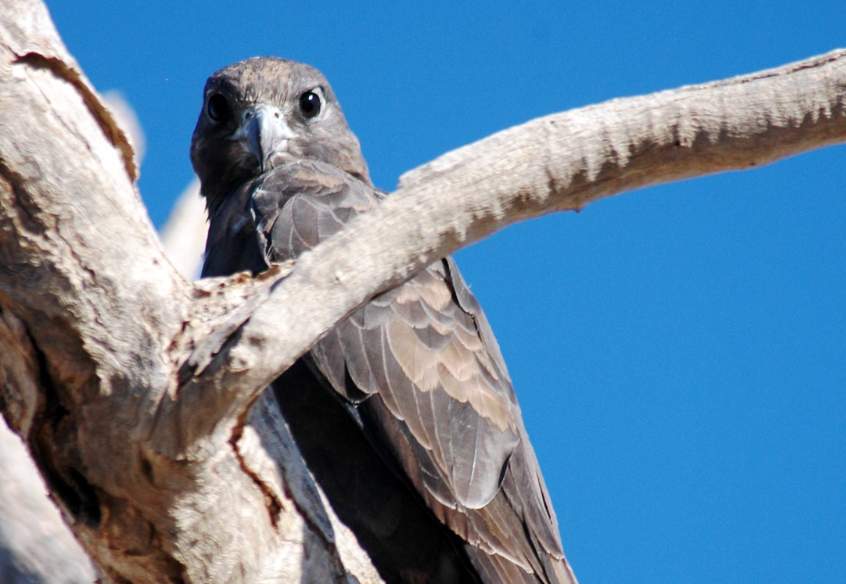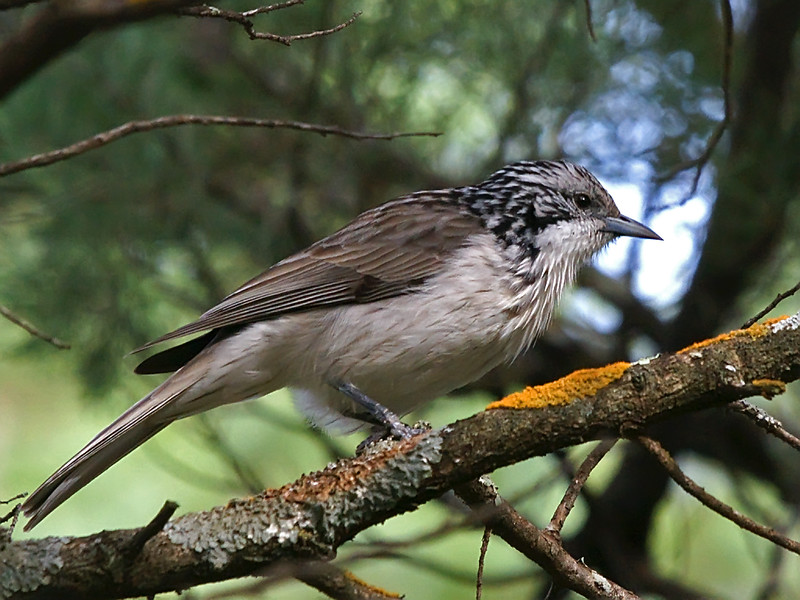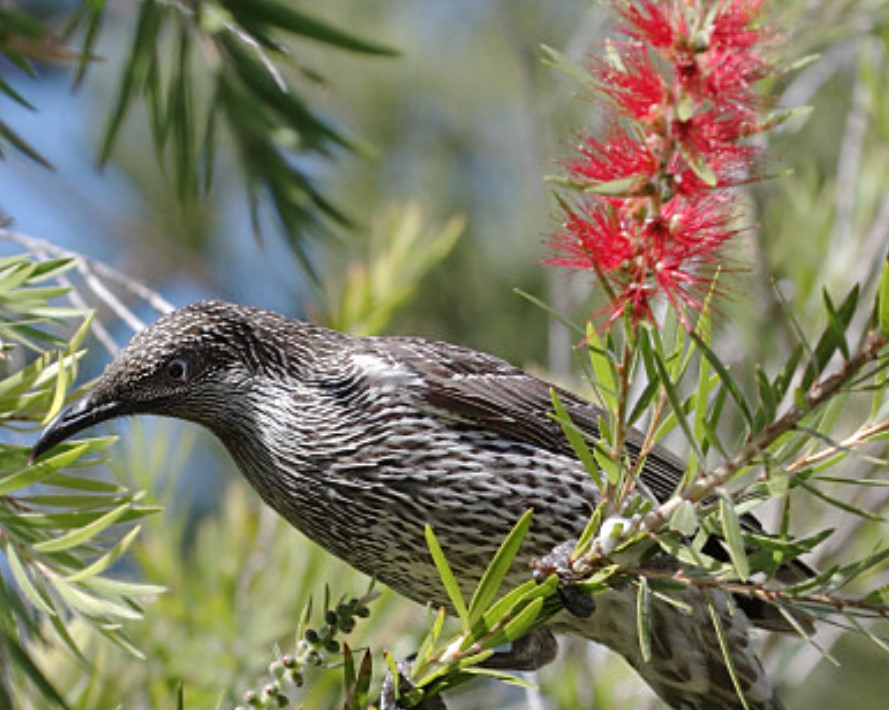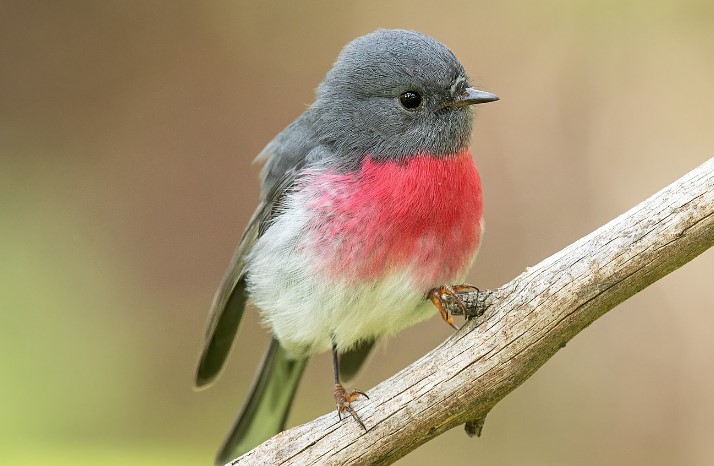Family: The black falcon (Falco subniger) is a medium-sized falcon belonging to the family Falconidae.
Habitat: One of the slenderest of the Australian falcons, the Black Falcon is also one of the most agile. In appearance, it resembles the long-legged Brown Falcon in the dark phase, but in habit, it is much different.
When searching for prey, it watches from the top of its vantage point or flies and glides on pointed wings low to the ground with a leisurely purpose. It even circles high in the sky. Prey is warm-blooded. Sighting it, the falcon dives into a stooping dive or weaves behind the intended victim. It snags it in midair or off the ground.
Falcons also fly at the bushes to flush their quarry. Birds up to galahs, ducks, and native hens are taken, as well as small rabbits on the run and rats. These falcons pluck and eat at the kill site or carry off to a perch to consume. Black Falcons are solitary nomads in inland Australia. In favorable seasons, when food is plentiful, they assemble in large numbers, and then when drought comes, they disperse to more coastal districts, frequently in the same open habitat. Mating seems temporary, and displaying birds seem to soar to astonishing heights and chase and stoop at one another, screaming much.
Territory is not well-marked, and nests, newly usurped for each breeding, are not defended until they are young. In typical raptor fashion, the female bears the brunt of incubation, brooding, and feeding the fledgling while the male hunts. Most of his kills are passed to her from a perch near the nest. Even after the young fledge, she may continue to feed them for several weeks. Their long, pointed wings and toothed upper mandible distinguish Australian falcons from hawks.
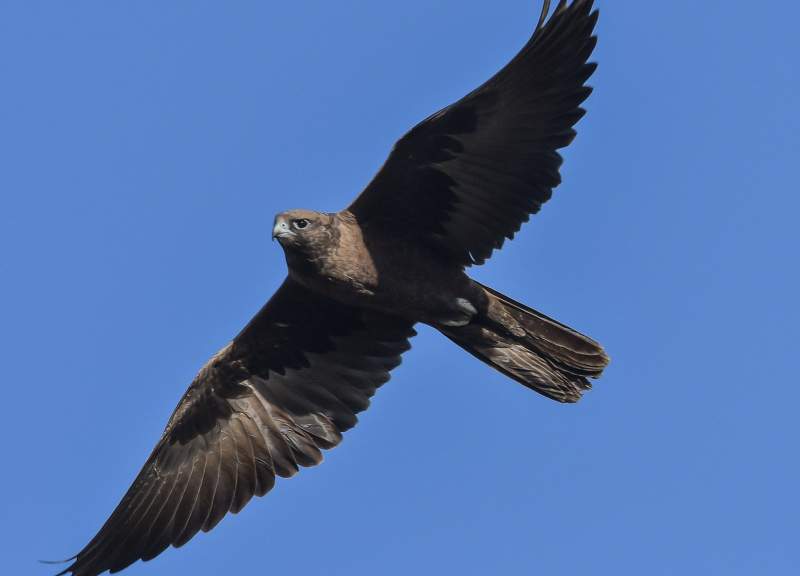
Size: Black Falcon Male 450 mm; female 550 mm long with a wing span of 95–155 mm. The male weighs 532 grams, while the female is 833 grams. Females are larger than males; this is sexual dimorphism.
Identification: Both sexes are similar and appear black, but most body plumage is dark sooty-brown. Upper throat and forehead are off white; the underside of flight feathers is sparsely barred white. Eyes brown. Bill is dark blue-grey; cere and eye-ring blue. Feet are blue-grey; claws are black. The immature bird is similar to adults but black, without white marks on the throat, forehead, or underwing. The downy young are white.
Vocalizations: Black Falcon calls a deep, repetitive gak-ak-ak also sometimes a soft whistling call, or a drawn-out moaning karrrrr. Silent when hunting. During courtship displays, males make eeik..eeik..eeik, while females whine or wail when begging for food or copulating.
Nest & Breed: Nesting and breeding occur in June and December. It does not build a nest; instead, it uses the old nests of other species of hawks, ravens, or crows.
Eggs: Black falcons lay 2 to 4 eggs, usually three. The eggs are pink-buff tinged with red and brown; they are rounded-oval, about 54 x 40 mm. The incubation period is about 32–34 days for females. The young fledge in about six weeks
Distribution: Mostly in sparsely timbered plains and steppes of the interior, often around waterholes, except in densely forested areas. Sometimes visit the southeastern coastal districts. This bird hunts in low vegetation, such as open wooded grasslands, saltbush plains, bluebush plains, and salal plains arid areas often have wetlands or artificial water bodies that are favored by birds. However, nomadic birds
Races: There are no races.
Read More – Gyr Falcon (Falco rusticolus)
